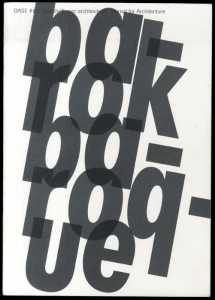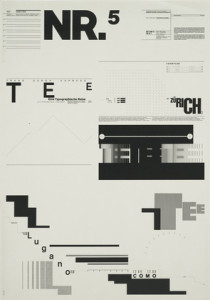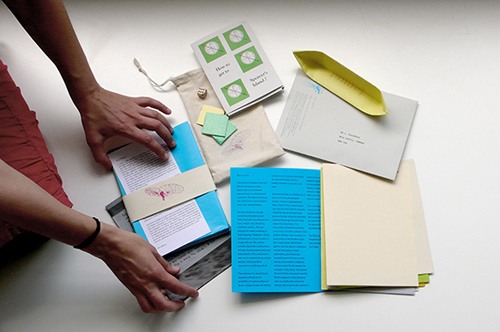Digital technologies in education – In recent years there has been a great increase in the interest in how digital technologies in the field of education and academic research can be such a useful tool and also a crucial way of testing the educational practice itself. The development of these technologies has been pushed through with the contribution of many different disciplines. The tools that have already been developed, and the potential of all the new devices, could be of great value to add to educational activity in every field and also an opportunity to rethink the ways in which to produce and share knowledge. Of course it is still an ongoing process, but some goals have been achieved, concerning digital publishing for educational purposes.
Both the conferences that INC has organized in the past years, Unbound book 2011 and Boek uit de band 2012, have treated this issue in a very complete way (for example, the conference session called “E-readers in Dutch Education” moderated by Joost Kircz) and the e-Learning research field is one of the most innovative and lively at this moment.
We are talking about digital tools and digital publishing for education and academic research.
What is the role of visual arts and design in these fields? And what about design and arts educational programs in the digital age?
Education for publishing – What I find curious is that we are actually living in the upcoming era of self publishing, in which it seems that the problem is only about giving the tools to enable the process and then things, like the making of a book or a magazine, can be easily done by anybody – with all the debate generated about the increase in knowledge production due to instant on demand replication. This is, in my opinion, exactly the burning question:
What could be the meaning of a publishing class in the age of DIY practices?
Related to book design, what is the role of the teacher now that he/she has lost the complete authority and expertise on the subject, because digital publishing is a field that hasn’t been fixed in specific features yet?
Is it right to start seeing teachers and students in a different and more collaborative hierarchy?
The publishing process in the field of visual arts – If we get more into the world of visual arts and graphic design and the educational practice in these fields, of course we need to focus more on the medium – we can call it book or whatever. There is no doubt that this particular approach could be one of the still missing points of view on digital publishing that can contribute to the proper development of it, even in its educational aspect. So we question about on what is a book and which shape it’s going to have in the near future, however, from the specific point of view of visual arts, we could also ask which is the right way to teach the entire publishing process, from the first idea to the final shape of the “object”.

Publishing Class 2011 – poster for a workshop
Defining the publishing process – So, the first step would be: What do we mean by publishing process? First of all, I think the best way is to start with a wide approach, trying to set a framework about how to teach the whole publishing process in a way that includes all its phases, all its aspects and all the possible shapes that a publishing course can take – for example, a journalism class or a book design class.
What are both the steps and the different areas in educational practice and what could be the main principles and guidelines for teaching in the publishing field?
Teaching journalism – An insightful point of view comes from the field of journalism and some very functional ways of setting the problem came from a paper that I recently read, written by Raoul Boers – lecturer in Content Management and Digital Culture at the Hogeschool van Amsterdam, who I am going to meet next week – and other lecturers from different universities: [R. Boers, E. Ercan, L. Rinsdorf, R. W. Vaagan, From Convergence to Connectivism: Teaching Journalism 2.0, Online Journal of Communication and Media Technologies, Volume: 2 Issue: 4, October 2012].
The paper sets the key concept of media convergence and how it leads to fundamental changes in the education for the journalistic field under three sub-topics, “the changes in the curricula, the changes in course syllabi, and the changes in the technological infrastructures of the academic institutions”.
“Cross-media news writing and storytelling are different from producing for broadcast media and print news […] In writing across media one adds elements to this process by creating a non-linear approach, which means that instead of developing a rigidly structured single narrative you choose to navigate through the elements of story by using a combination of text, still photographs, video clips, audio, graphics, and interactivity such as polls or blogs on a website in such a fashion that each medium is complementary.”
The paper goes on to explain how a journalism course can be structured, observing how some classes have been arranged around the concepts of media convergence, collaboration and user-generated content, identifying two main aspects of the process, which I find particularly effective: “The integrative aspect (the merging of different technologies and industries to create new forms of cultural product and new modes of production and delivery e.g. iPhones, iPads, androids) and the divergence aspect (the flow of content across multiple media platforms, the cooperation between multiple media industries and the migratory behavior of media audiences, who will go anywhere for desired entertainment experience).”
How to frame a publishing class – There are several things to be previously defined in order to frame a publishing class:
A. The different profiles involved in the process;
B. The different activities and how they get integrated in the process (integrative aspect);
C. What the product is like and what the different platforms for it are (divergence aspect).
Finally, there are also kinds of product that are different on another level: beyond the media convergence aspect, there are indeed several different objects that have their own features and each one needs a different approach because it triggers a different process. There is a difference if I want to make a book for a novel, a news paper, a monthly magazine, an artist’s book etc. This doesn’t mean that they couldn’t be interacting with each other, but I think it is also important to set some specifics for each, to define better the market, the user, the medium and so on.
Another aspect to analyze, following these that I have explained above, is:
How to integrate technology in the process of teaching for publishing? Both in the phases of the process and for the different activities, profiles, platforms, products and objects etc.
Design class for publishing and publishing class for visual arts – There are many examples of studies about how digital technologies are embodied in the process of publishing in journalism and in the field of academic writing for several disciplines, and some education programs are completely conceived in this way.
But I’m afraid that the point for art and design is always the same: Why is this issue so complicated to frame and even not so taken into account in the field of the making of visual arts and the making of educational programs for visual arts? I see two main reasons: one is because the digital format and process has not been explored much sufficiently in book design and this is actually a consequence of the second reason: there is such a strong paper tradition in all the design and art parameters, rules, limits, and possibilities there are changing fast in technologies, but so slowly in the concepts. This makes sense also for the newspaper and the academic essay formats, but much more so for books because the design and art traditions have always been seen primarily as a their own visual product.
As we tried to identify the publishing process from an educational point of view following some examples in the journalistic field, we could ask the same questions and try to set the same steps and levels of arrangement for a book design course. But the specific challenge in this field should be indeed how to deal with the wall of such a strong paper and typographic tradition in graphic design and how to translate it into a digital environment.

Werkplaats Typografie
The dialectic aspect of the teaching practice – What I also see as a decisive key concept, not to forget in an experimental phase such as it is, is that the dialogue between two different generations and roles (students/teachers) could be an interesting starting point for the research on how to make a book today, observing how this dialogue can actually affect the design process.
So the teachers could be seen as the ones that know how to do it properly in a more traditional way, and the students, the so-called digital-natives, could be the ones who have the right amount of “ignorance” and openness to new technologies to break the rules of the book and see it in a new way, as it actually has always been in the past – looking at, for example, the work of the pioneer of the New Wave movement in graphic design, Wolfgang Wiengart and his totally unconventional usage of the photographic film in typography, in the context of a strong tradition as the Swiss one was in the 50s and 60s. This is just one of the many examples of breaking the rules in graphic design, using a particular technology in a diverse way.
However, the dialectic aspect of the teaching practice is something that has always been there and it’s what makes education not only an activity to educate someone who is younger and less expert than us, but also a way to come up with new ideas, what makes a discipline itself evolve, starting from both positions, teacher’s and student’s. How to take advantage of this dialogue to re-define the book as such?

Wolfgang Weingart – experiments with letterings
The state of education in graphic design and visual arts – All these issues could help in having an idea of what the state of the art in the education for publishing is, both in the design and art practices and in the creating-content activities, but also to set some anchor points that could be useful to have a clear idea of all the steps achieved, in order not to be run over by the times changing so fast in terms of new media, new technologies and, in general, new behaviour.
As many designers and visual artists are also educators and they carry out a huge part of their research through the teaching practice, it’s interesting to talk with them about the educational aspect of their profession, because they can directly see what’s going on in the educational field from the point of view of someone who is actually making visual communication.
Many of them point out that they have the feeling that what we teach/learn in classes is to be a professional that could be just expired or be totally different in the next few years; this is true especially in the design field, looking at all the new and specific skills that a designer needs to have. Probably the world is not seeking the old-school-designer anymore, the designer has to become also a developer, or on the other hand, a manager, a critic, a curator etc. or maybe someone more like a director that makes all the parties interact in the proper way. But this is of course a very controversial issue: Are we moving towards a more specialized or a more generic kind of profession in the design field? Can the dialectic aspect of education in some ways contribute to solve this ambiguity and how?
Students and teachers in comparison – in order to study more closely these issues of book design, artist’s book and the educational aspects of both in the digital age, in the next interviews we’ll ask these questions directly to students and teachers.
– Session one will be two focus group interviews – students and teachers together – in two Dutch institutes, one is a school of graphic design and typography: Werkplaats Typografie, based in Ahrnem; and one is a course of publishing for visual art: Publishing Class 2012, the two year program designed for the Dutch Art Institute MFA ArtEZ by Casco – Office for Art, Design and Theory.
– Session two will be two single interviews in the field of journalism publishing, one to a student: Lars Böhm, developer of the magazine Uncovered; one to a teacher: Raul Boers, Amsterdam University of Applied Science.

Casco’s Publishing Class works


